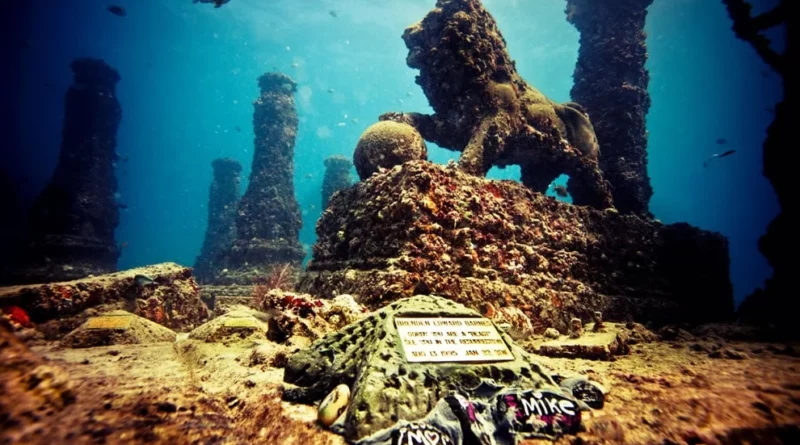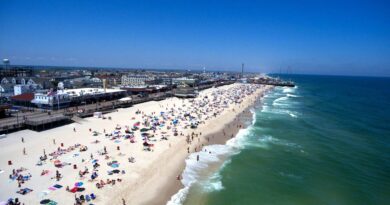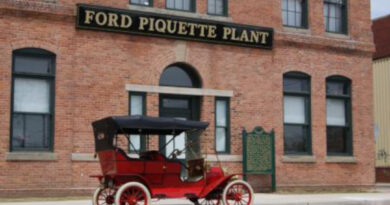20 Fun Facts About Miami Florida
Miami, Florida, often referred to as “The Magic City,” is a place where cultures converge, beaches beckon, and the nightlife never sleeps. Known for its warm climate, stunning art deco architecture, and thriving cultural scene, Miami has grown from a small trading post into one of the most famous cities in the world. With its rich history and diverse population, Miami offers something for everyone, whether you’re a history buff, a beach lover, or a food enthusiast.
The Early Days: From Native Americans to Spanish Explorers
Long before the glitz and glamour of modern Miami, the area was inhabited by the Tequesta people, a Native American tribe that lived in southern Florida for over 2,000 years. The Tequesta established villages along the Miami River and Biscayne Bay, thriving on the region’s abundant natural resources.
The first European to visit the area was Spanish explorer Juan Ponce de León in 1513. However, it wasn’t until the 19th century that Miami began to develop as a significant settlement. The U.S. acquired Florida from Spain in 1821, and Miami remained a small frontier town for much of the 1800s.
The Birth of Miami: Julia Tuttle and Henry Flagler
The turning point in Miami’s history came in the late 19th century, thanks to Julia Tuttle, a wealthy widow from Cleveland, Ohio, who purchased a large tract of land in the area. Tuttle envisioned Miami as a thriving city and worked tirelessly to make her dream a reality.
Her efforts paid off when she persuaded Henry Flagler, a prominent railroad tycoon, to extend his Florida East Coast Railway to Miami. In 1896, the first train arrived in Miami, and the city was officially incorporated on July 28 of that year, with a population of just 300 people.
Growth and Transformation
With the arrival of the railroad, Miami quickly transformed into a bustling city. The early 20th century saw a real estate boom, with developers flocking to the area to capitalize on its warm climate and picturesque scenery. The city’s population grew rapidly, and Miami became a popular destination for tourists and new residents alike.
However, Miami’s growth was not without its challenges. The city endured devastating hurricanes in 1926 and 1935, as well as economic downturns during the Great Depression. Despite these setbacks, Miami continued to grow, with new neighborhoods, hotels, and infrastructure projects transforming the city.
Post-War Boom and Cultural Diversity
World War II marked a turning point for Miami, as the city became a major military hub. After the war, many servicemen who had been stationed in Miami returned to the city with their families, contributing to a post-war population boom. The 1950s and 1960s saw Miami emerge as a major metropolitan area, with new developments and a growing population.
One of the most significant events in Miami’s modern history was the Cuban Revolution of 1959, which led to a mass exodus of Cuban refugees to the city. This influx of Cuban immigrants transformed Miami’s cultural landscape, establishing it as the capital of the Cuban diaspora. The city’s cultural diversity continued to expand over the following decades, with new waves of immigrants from Latin America, the Caribbean, and beyond.
Modern Miami: A Global City
Today, Miami is a global city known for its diverse population, booming economy, and international influence. The city is a major center for finance, commerce, culture, and tourism. Miami’s skyline is a testament to its rapid growth, with towering skyscrapers reflecting the city’s status as a major urban center.
Miami’s population continues to be shaped by waves of immigration, resulting in a unique cultural mosaic where languages, traditions, and cuisines from around the world coexist. The city’s annual events, such as Art Basel Miami Beach, the Miami International Film Festival, and the Miami Carnival, showcase its dynamic cultural scene.
20 Fun Facts About Miami
- Magic City: Miami is often called “The Magic City” because of its rapid growth. The city’s population grew so quickly that it seemed to appear as if by magic.
- Only Major U.S. City Founded by a Woman: Miami is the only major city in the United States that was founded by a woman, Julia Tuttle.
- Cuban Capital of the U.S.: Miami has the largest Cuban-American population in the United States, earning it the nickname “The Capital of Latin America.”
- Art Deco Paradise: Miami Beach is home to the largest collection of Art Deco architecture in the world, with over 800 buildings dating back to the 1920s and 1930s.
- Port of Miami: Known as the “Cruise Capital of the World,” the Port of Miami is the busiest passenger port globally, with millions of passengers passing through each year.
- Underwater City: Miami is the only major U.S. city bordered by two national parks: Biscayne National Park and Everglades National Park.
- Television Fame: Miami has been the setting for several popular TV shows, including “Miami Vice,” which popularized the city’s image as a glamorous, sun-soaked metropolis.
- Coral Castle: Coral Castle, a mysterious structure made of massive coral blocks, was built single-handedly by Edward Leedskalnin, who claimed to know the secrets of the pyramids.
- Home to the Largest Collection of Tropical Plants: Fairchild Tropical Botanic Garden in Miami is home to the largest collection of tropical plants in the United States.
- Miami Ink: The city is home to the world-famous tattoo studio Miami Ink, which became the subject of a popular reality TV show.
- Hurricane Andrew: In 1992, Miami was severely impacted by Hurricane Andrew, one of the most destructive hurricanes in U.S. history.
- Language Diversity: Over 60% of Miami’s population speaks a language other than English at home, with Spanish being the most common.
- A Hub for International Banking: Miami is the second-largest financial hub in the United States after New York City, with many international banks headquartered here.
- Film Industry: Miami has a thriving film industry and is a popular location for movies and TV shows due to its beautiful landscapes and sunny weather.
- Gambling Mecca: Miami is close to several Native American-run casinos, making it a popular destination for gambling enthusiasts.
- Miami Circle: The Miami Circle, a prehistoric archaeological site, was discovered in 1998 and is believed to be over 2,000 years old.
- Venetian Pool: Coral Gables’ Venetian Pool is a historic public swimming pool built in 1923 from a coral rock quarry, and it’s one of the most unique swimming spots in the country.
- Miami International Airport: Miami International Airport is one of the busiest international airports in the world, serving as a major gateway between the U.S. and Latin America.
- Home to the World’s Largest Collection of Commercial Aircraft: The Miami Airplane Graveyard is where thousands of decommissioned commercial aircraft are stored.
- Little Havana: Little Havana is a vibrant Miami neighborhood that celebrates Cuban culture, with its Calle Ocho festival being one of the city’s biggest cultural events.
Discover more from City Towner
Subscribe to get the latest posts sent to your email.




